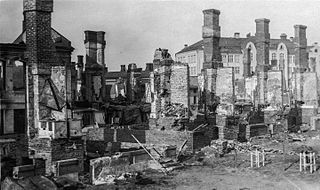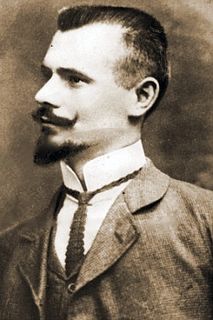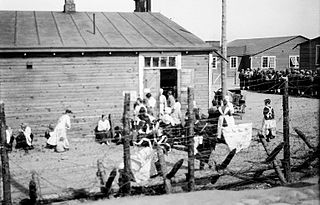
Finland, officially the Republic of Finland, is a Nordic country in Northern Europe. It shares land borders with Sweden to the northwest, Norway to the north, and Russia to the east, with the Gulf of Bothnia to the west and the Gulf of Finland across Estonia to the south. Finland covers an area of 338,455 square kilometres (130,678 sq mi) with a population of 5.6 million. Helsinki is the capital and largest city, forming a larger metropolitan area with the neighbouring cities of Espoo, Kauniainen, and Vantaa. The vast majority of the population are ethnic Finns. Finnish, alongside Swedish, are the official languages. Swedish is the native language of 5.2% of the population. Finland's climate varies from humid continental in the south to the boreal in the north. The land cover is primarily a boreal forest biome, with more than 180,000 recorded lakes.
The transport system of Finland is well-developed. Factors affecting traffic include the sparse population and long distance between towns and cities, and the cold climate with waterways freezing and land covered in snow for winter.

The Finnish Civil War was a civil war in Finland in 1918 fought for the leadership and control of the country between White Finland and the Finnish Socialist Workers' Republic during the country's transition from a grand duchy of the Russian Empire to an independent state. The clashes took place in the context of the national, political, and social turmoil caused by World War I in Europe. The war was fought between the "Reds", led by a section of the Social Democratic Party, and the "Whites", conducted by the conservative-based senate and the German Imperial Army. The paramilitary Red Guards, which were composed of industrial and agrarian workers, controlled the cities and industrial centers of southern Finland. The paramilitary White Guards, which consisted of land owners and those in the middle- and upper-classes, controlled rural central and northern Finland, and were led by General C. G. E. Mannerheim.

Crime in Estonia is combated by the Estonian police and other agencies.

Peter the Painter, also known as Peter Piaktow, was a member of a gang of immigrant Latvian anarchists in London in the early 20th century. After supposedly fighting in and escaping the Sidney Street Siege in 1911, he became an anti-hero in London's East End. He was never caught, and there is some question as to whether he had participated in the Sidney Street incident, or even whether he actually existed at all.

The Red Guards were the paramilitary units of the Finnish labour movement in the early 1900s. The first Red Guards were established during the 1905 general strike, but disbanded a year later. After the Russian 1917 February revolution the Red Guards were re-established and in the 1918 Finnish Civil War they formed the army of Red Finland. The combined strength of the Red Guard was about 30,000 at the beginning of the Civil War, peaking at between 90,000 and 120,000 during the course of the conflict. The number included more than 2,000 members of the Women's Guards. In May 1918, up to 80,000 Reds were captured by the victorious Whites, 12,000 to 14,000 of them died in the prison camps due to execution, disease and malnutrition. A majority of the Reds were finally pardoned in late 1918.

The Battle of Tampere was a 1918 Finnish Civil War battle, fought in Tampere, Finland from 15 March to 6 April between the Whites and the Reds. It is the most famous and the heaviest of all the Finnish Civil War battles. Today it is particularly remembered for its bloody aftermath as the Whites executed hundreds of capitulated Reds and took 11,000 prisoners placed in the Kalevankangas camp.

The Eurovision Song Contest 2007 was the 52nd edition of the Eurovision Song Contest. It took place in Helsinki, Finland, following the country's victory at the 2006 contest with the song "Hard Rock Hallelujah" by Lordi. Organised by the European Broadcasting Union (EBU) and host broadcaster Yleisradio (Yle), the contest was held at the Hartwall Areena, and consisted of a semi-final on 10 May, and a final on 12 May 2007. The two live shows were presented by Finnish television presenter Jaana Pelkonen and musician and TV-host Mikko Leppilampi. In addition, Krisse Salminen acted as guest host in the green room, and reported from the crowds at the Senate Square.

Homer Virgil Van Meter was an American criminal and bank robber active in the early 20th century, most notably as a criminal associate of John Dillinger and Baby Face Nelson.

Simon Arshaki Ter-Petrosian, better known by his nom de guerre of Kamo, was an Old Bolshevik revolutionary and an early companion to Soviet leader Joseph Stalin.
The Georgian Socialist-Federalist Revolutionary Party was a Georgian nationalist party, founded in April 1904. The party's program demanded the national autonomy of Georgia, within the framework of a Russian federal state, and advocated for a democratic socialist system. Mainly based in the rural areas, the party's membership was almost entirely drawn from the peasantry and the petty gentry. The political profile of the party had an appeal amongst moderately nationalist intellectuals, schoolteachers and students. The party strived that agricultural issues not be decided by central authorities, but by autonomous national institutions. The party published the periodical Sakartvelo.
The 2010 European Junior Swimming Championships were held from 14–18 July 2010 in Helsinki, Finland. The Championships were organized by LEN, the European Swimming League, and were held in a 50 m pool. Ages for competitors, per LEN rules are: girls-15 or 16 years old; boys-17 or 18 years old.

The 1907 Tiflis bank robbery, also known as the Erivansky Square expropriation, was an armed robbery on 26 June 1907 in the city of Tiflis in the Tiflis Governorate in the Caucasus Viceroyalty of the Russian Empire. A bank cash shipment was stolen by Bolsheviks to fund their revolutionary activities. The robbers attacked a bank stagecoach, and the surrounding police and soldiers, using bombs and guns while the stagecoach was transporting money through Erivansky Square between the post office and the Tiflis branch of the State Bank of the Russian Empire. The attack killed forty people and injured fifty others, according to official archive documents. The robbers escaped with 241,000 rubles.
Nikolay Yevgenyevich Burenin was a Russian Bolshevik revolutionary, writer, concert pianist and music collector who worked as an organizer and specialist for Bolshevik illegal operations. He was a member of the Union of Soviet Writers.

Aarne Alarik Orjatsalo was a Finnish actor, theater manager, writer, revolutionary and soldier. He fought for the Finnish Red Guards in the 1918 Civil War and in the 1918–1919 Allied North Russia Intervention ranked as a British Navy officer. Orjatsalo later fled to the United States, where he was known by the alias Alaric Arnee.

Tampere camp was a concentration camp operating from 6 April 1918 to 15 September 1918 in the Kaleva district of Tampere, Finland. It was set up for the Reds captured by the White Army after the Finnish Civil War Battle of Tampere.

All-female units of the paramilitary Red Guards served in the 1918 Finnish Civil War. The first Women's Guards units formed in early February in the main Finnish cities. More than 15 female Guards units were established by the end of March 1918, with a total of about 2,000 women serving. The female Guards units consisted of young industrial workers, maids, and servants. Their average age was about 20, but some were as young as 14. The women served in auxiliary units in combat.

Jānis Čoke was a Latvian revolutionary who is known for his involvement in the 1906 robbery of the branch of Russian State Bank in Helsinki.

Vihtori Kosonen (1873–1934) was a Finnish journalist, publisher, and free-thinker.
Anarchism in Finland dates back to the early revolutionary movements of the 20th century, seeing organized activity begin in the 1960s.















